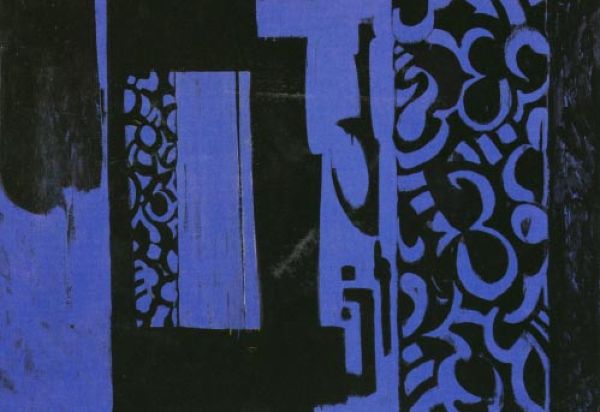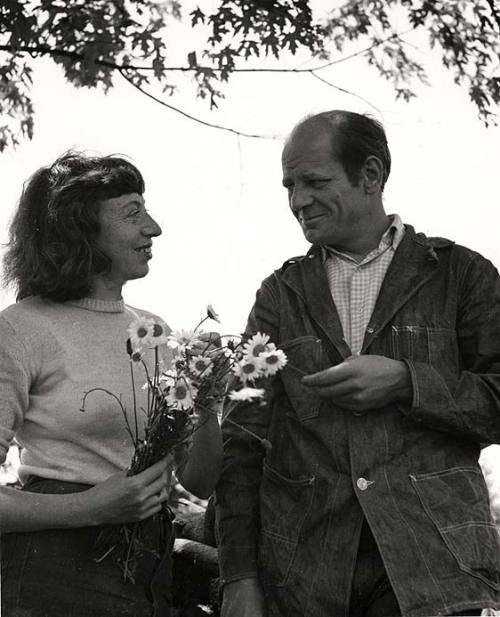 Lee Krasner was a renown abstract expressionist painter during the 20th century. She was born on October 27, 1908 and died June 19, 1984. She grew up in New York. Krasner had her training in the Women's Art School of Cooper Union and then, in the Art Students League. Throughout her training, Krasner would maintain an "independent streak" and was always creative with her paintings. She would almost always go against the traditional way of painting at the time, which was realistic self-portraiture. Krasner took attempts on surrealism because it was a different art style and not conservative. She believed that art should not be repetitive, it should be dynamic and challenging. A famous quote was drawn from this belief:
Lee Krasner was a renown abstract expressionist painter during the 20th century. She was born on October 27, 1908 and died June 19, 1984. She grew up in New York. Krasner had her training in the Women's Art School of Cooper Union and then, in the Art Students League. Throughout her training, Krasner would maintain an "independent streak" and was always creative with her paintings. She would almost always go against the traditional way of painting at the time, which was realistic self-portraiture. Krasner took attempts on surrealism because it was a different art style and not conservative. She believed that art should not be repetitive, it should be dynamic and challenging. A famous quote was drawn from this belief:"I have never been able to understand the artist whose image never changes."
In October, 1945, Lee Krasner married Jackson Pollock. Jackson Pollock, who was a famous painter for creating the unique style of painting, drip painting was a major figure in the abstract expressionist movement. And that was because of the influence Krasner had on Pollock. Her marriage to Pollock led Krasner's creative artwork to be eclipsed by her husband's fame. She was not given the credit that she solely deserved. Pollock was always the one receiving most of the credit while Krasner was always in the shadow. The trend of women's work being overlooked because of their husbands' fame continues to carry on throughout history. However, Krasner knew what the risks and the disadvantage were when she married Pollock. She knew that being married to Pollock meant that she was going to have the responsibility to "promote and manage practical aspects" of Pollock's career. Krasner also knew that her artwork will be taking a back seat while she tends to her duties for her husband and she generously took on her new responsibilities.
"Jackson and I worked side by side for years, and our paintings evolved together."
Lee Krasner was careful not to show work similar to that of Jackson's or else everyone will assume that their style of art started by her husband. It is unfortunate to realize that every time Jackson's name and artwork is mentioned, people do not associate them with Lee Krasner. However, it is the complete opposite with Lee Krasner. Anytime her name and artwork is metioned, almost always they are associated with her husband. After the death of her husband in 1956, Krasner was criticized that her artwork still remain in the shadows even though her influential husband died. In other words, the critics were saying that Krasner did not have any talent, that the talent died with her husband. She continued to work on her paintings regardless of what the critics said.
 |
| Blue&Black, 1951-53 |
The following video is about additional paintings that Lee Krasner did throughout her life as an abstract expressionist:
Work Cited
Glueck, Grace. "ART: LEE KRASNER FINDS HER PLACE IN RETROSPECTIVE AR MODERN." The New York Times. The New York Times, 21 Dec. 1984. Web. 20 Nov. 2012. <http://www.nytimes.com/1984/12/21/arts/art-lee-krasner-finds-her-place-in-retrospective-ar-modern.html?pagewanted=all>.
Shaffer, Jessica. "Lee Krasner Biography, Art, and Analysis of Paintings by TheArtStory." Lee Krasner Biography, Art, and Analysis of Paintings by TheArtStory. The Art Story Foundation, n.d. Web. 20 Nov. 2012. <http://www.theartstory.org/artist-krasner-lee.htm>.
The Guerrilla Girls' Bedside Companion to the History of Western Art. New York: Penguin, 1998. Print.

I really enjoyed reading your blog and I especially loved you black and white pictures. The color really brought the story to life.
ReplyDeleteI enjoyed your post and especially how you pinpointed Lee Krasner's popularity not being fully recognized due to her husbands fame. I felt this was very important.
ReplyDelete